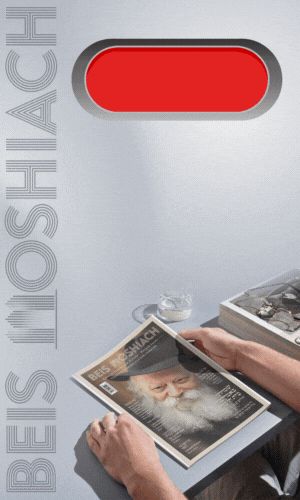Rabbi Shmuel Katan, 84, OBM
We are deeply saddened to report on the passing of Rabbi Shmuel Katan, a teacher, chemist, and a Chasidic violinist of Kfar Chabad and later Har Nof, Yerushalayim, who was zoche to play his violin at the Rebbe’s Farbrengen. He passed away on Monday, 19 Shvat 5784 • Full Story
By Chabadinfo Reporter
We are deeply saddened to report on the passing of Rabbi Shmuel Katan, a teacher, chemist, and a Chasidic violinist of Kfar Chabad and later Har Nof, Yerushalayim, who was zoche to play his violin at the Rebbe’s Farbrengen. He passed away on Monday, 19 Shvat 5784.
Shmuel was born on 21 Cheshvan 5700 to his parents R’ Yosef and Martha Leah Katan in Yugoslavia.
During WWII, together with his father, he was on the run in the woods in Yugoslavia with the Partisans, this is how they were saved from the Holocaust. When he was about eight years old in 5708, his family immigrated to Eretz Yisroel.
He began playing the violin at a relatively young age, and had been privileged to study with some of the best teachers in Israel. He even played with a number of orchestras, including the Technion orchestra. Later studied chemistry at Technion, Israel’s Institute of Technology.
In a interview he explained how he became closer to Yiddishkeit, “During my fourth year of study at the Technion, Israel’s Institute of Technology, I experienced a spiritual awakening that was difficult for me to define at the time. I searched in all sorts of places before arriving at the conclusion that my path lay in Judaism. As a result of a connection that I forged with Rabbi Reuven Dunin of Haifa, and with Rabbi Moshe Weber of Yerushalyim, I began studying at the Lubavitch yeshivah in Kfar Chabad.”
After about a year of study, he began to work as a teacher in the Chabad trade School. And in 5727, he got married to his wife Menucha Rochel.
Even after he became a chossid he didn’t stop playing his violon, he regularly played at Farbrengens and at Chabad events. He also continued – under the Rebbe’s instruction – to complete his chemistry degree, he had previously started at Bar Ilan University
He first visited the Rebbe in Tishrei 5728, a year after his wedding, as he was leaving for New York, his acquaintances recommended that he take my violin with him.
At the end of the Simchas Torah, the Rebbe held a farbrengen and after conducting the Havdalah ceremony, distributed wine from his cup. When he came up to receive some, I asked the Rebbe if he might play my violin. The Rebbe looked at him for a moment with a penetrating gaze and said, “Very good, please.”
He related what happened next, “I took out the violin which, at the urging of some of the Chasidim I had run back to get after Havdalah and stored under the bleachers. Two well-known singers, Rabbi Moshe Teleshevsky and Rabbi Shamshon Charitonow were standing next to me, and after a brief consultation with the Rebbe, they told me to play Essen est zich. This song bemoans how easy it is to connect with physical pleasures, yet how difficult it is to pray, its soulful tune expressing a deep longing and yearning for G-dliness.
“The hall was packed as I began to play, while the Rebbe continued to pour wine for all the many people who filed passed him. When I finished the niggun, the Rebbe gestured that something wasn’t right and he motioned to the crowd that they should sing the song so that I could learn it.
“The two singers tried to explain to me what the Rebbe meant, that there are two nuanced notes that I played slightly incorrectly, and they demonstrated to me the way it should go. I tried a few times until I got it right. After I corrected that part, the Rebbe asked me to play it again a few times, adding, “Once again, once again,” and “pianissimo,” using the Italian musical term which means “very softly.”
“In music, the dynamics of the volume give the sound its color and feeling. From a dry technical perspective, you can play the same part at the same volume a few times again and again, but that would not do the melody justice. What the Rebbe was trying to tell me was that this part of the niggun was expressing yearning, and therefore the softness of the sound has significance. I repeated it more softly, and suddenly the Rebbe turned to me and said, “But the last note you should make a tekiah gedolah,” referring to the forceful long note sounded with the shofar on Rosh Hashanah. And I tried to do that, making it last as long as I could.
“When the Rebbe started to leave the hall, the crowd sang Ki B’simchah Teitzeiu, and the Rebbe looked towards me, as though to signal that I should join in. I immediately began to play along with the crowd, and then the Rebbe instructed, “Make a crescendo,” using another Italian musical term which describes a sound that grows louder and louder. I knew the term, but over the singing, I didn’t hear exactly what the Rebbe had said, and I leaned toward the Rebbe to ask what he meant. “The opposite of pianissimo,” he said. Of course, I played the song again with liveliness, and the whole crowd sang with enthusiasm. It was a wonderful event.”
Later, he made a as a chemist, where he paid his way and completed several degrees. Initially he worked at Teva. And then for about half a year as an IDF officer at the air force base in Zerifin. And in his last years, he lived in Har Nof, Yerushalayim.
He is survived by his children: Rabbi Yaakov Zachariah Katan, – Elad, Eretz Yisroel; Rabbi Shlomo Katan – Miami, Florida;, Rabbi Menachem Mandel Katan – Buffalo, NY; Rabbi Chaim Ben Zion Katan – Toronto, ON; and Rabbi Yechiel Michoel Raphael Katan – Buffalo, NY.
Baruch Dayan Haemes
117
Join ChabadInfo's News Roundup and alerts for the HOTTEST Chabad news and updates!










































